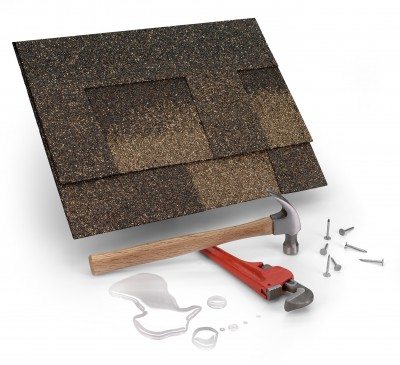
As a homeowner, you should take the time to learn what type of roof you have, so that you can learn how to properly maintain and care for it. Over time, the elements and various weather conditions can deteriorate a roof more quickly depending on the type and condition of the roofing materials. When a roof first begins to deteriorate, the damage is mostly minor in severity and generally affects the capsheets, flashing, drains, penetration seals, and other components. After deterioration has passed the point of these roofing components, deterioration begins to affect the roof membrane, seals, mastic, seams, and other weather proofing materials. If this deterioration is not promptly and properly addressed, a roof can fail much earlier than its typical lifespan, which can result in very expensive repairs and/or replacement. Performing the necessary maintenance and repairs to damaged components and doing so early in the deterioration process can help to extend the useful life a roof for many years and allow it to perform like new.
Common Types of Roofing
Asphalt Shingles – Asphalt shingle is the most common type of roof in the United States because of its low cost, wear capabilities, and easy installation. Asphalt shingles come in a variety of colors, prices, and styles. The typical lifespan of a properly maintained asphalt shingle roof is 15-30 years.
Modified – Modified membranes are made of asphalt and are usually applied with several layers or interplies. This is the most common residential type of roof. Modified materials for roofing come in smooth, granule, and roll-faced textures/surfaces. Sometimes this roof type has an asphalt and aggregate coating/floodcoat. Modified roofs typically have a useable life of 8-12 years.
Wood Shingles & Shakes – Wood shingles and shakes come in a wide variety of woods such as pine, redwood, and cedar. Wood shingles are cut by a machine and wood shakes are made by hand. They require quite a bit of maintenance over the years, but the lifespan of a wood shingle or shake roof is 30-50 years if properly maintained.
Tile – Tile roofs are made up of concrete, slate, or clay. The tiles themselves last 40-75 years, but the underlying membranes last approximately 30 years if properly installed. Improperly installed membranes can shorten the lifespan to 5-10 years.
BUR (built up roof) – Built up roof membranes are made of a combination of glass fiber, asphalt, and polyester reinforcing felts. This type of membrane has a surface made up of mineral granules or a fluid-applied coating. This type of roof requires regular and routine maintenance and has a useable life of 8-15 years.
Metal – Metal roofs typically provide some of the longest lasting wear and can survive the severest of weather conditions. Metal roofs come in wide variety of finishes, styles, and colors. The actual metal material can last up to 50 years, but you will typically experience penetrations in the material and fasteners that need to be resealed every 2-3 years.
Thermoplastic Membranes – Thermoplastic membranes are made up of polymers that soften and harden depending on temperature. This characteristic of thermoplastic roofing materials wears well as long as the materials are not heated to the point of decomposition. This type of roof is hot-air welded for repairs and maintenance. There are two types of thermoplastic membranes: TPO (thermoplastic olefin) and PVC (polyvinyl chloride). Well-maintained TPO roofs last 20-25 years and well-maintained PVC roofs last 15-20 years.
Thermoset Membranes – Thermoset membranes are made up of rubber-like pieces of material and are welded together to form a single layer of membrane. Some of the types of membranes in the thermoset category include: EPDM (Ethylene propylene diene monomer) with a lifespan of 12-15 years, and CSPE (Hypalon) with a lifespan of 15-20 years.
A properly maintained roof, no matter what type, will always last longer. Be sure to learn which type of roof you have so that you can learn how to properly maintain it to ensure the best reliability and longest useable life.

